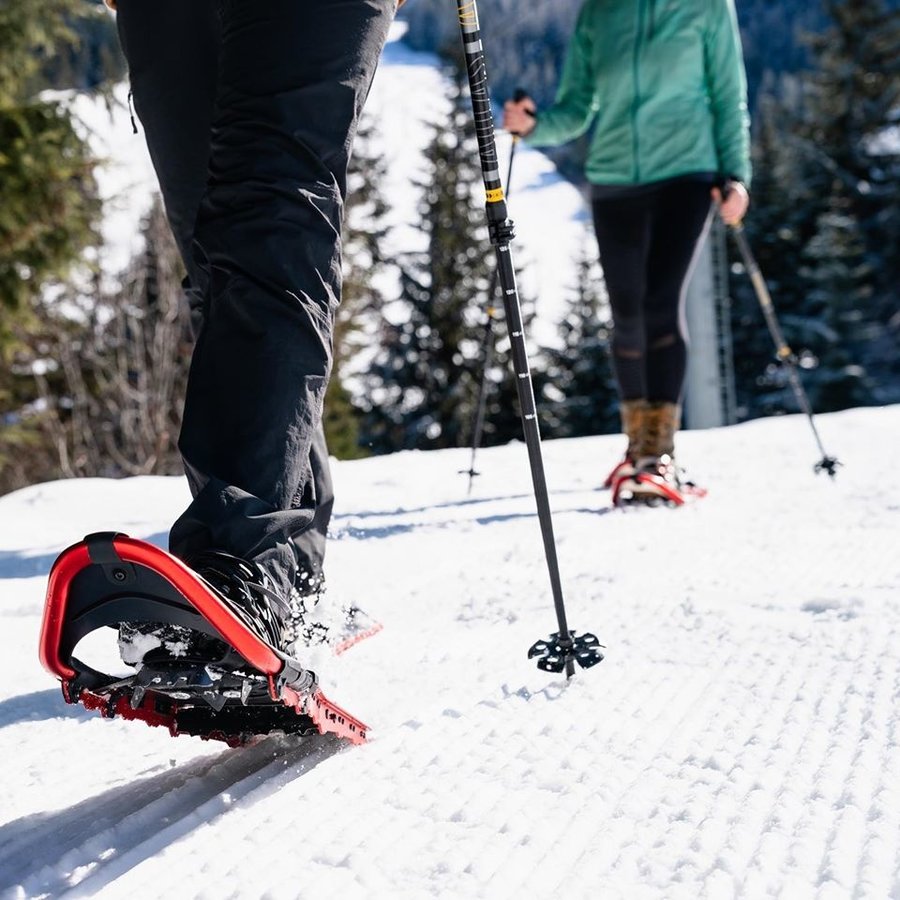While our winter weather hasn’t arrived just yet, it is certainly just around the corner. Every winter, about a month after the first snow sticks, I start to see patients referred to physical therapy to address pain in one or both hips that began when they started snowshoeing or downhill/cross-country skiing. This common problem is rarely serious, but it can become painful enough to limit participation in these activities. Fortunately, treatment for it is usually quite successful.
Patients usually localize pain to the outside of the hip, deep in the gluteal muscles, and/or down the outside of the upper leg. The structures which are typically the source of the pain are the gluteal tendons, the hip bursa, or the piriformis muscle. It is also possible for two or more of these structures to be an issue at the same time.
This type of hip injury is categorized as a repetitive strain injury, or RSI. An RSI is caused by microtrauma to the involved tissues, resulting in pain and inflammation. These injuries typically occur on one side of the body, but can sometimes occur on both sides. They are thought to stem from uneven stress placed on a certain part of the body due to muscle or other biomechanic imbalances.
When explaining why RSIs occur, I like to use cars as an example. If you drive a car with a malfunctioning tire long enough, there is likely to be breakdown elsewhere in the vehicle. Driving with a bum wheel stresses the entire vehicle, and while problems may occur near the bad tire, they can also show up somewhere else in the system.
This is how weakness in the core muscles can cause pain to manifest on the outside of the hip. When it comes to treatment, it is crucial to identify what is actually causing the breakdown instead of only paying attention to the painful area.
If you find that your hips bother you when you start getting active in the winter, here are a few tips to keep the pain away:
- Do some pre-season training– A little hip and core strengthening goes a long way towards preventing numerous RSIs. Exercises like planks, side step-ups, squats, and side planks are a great place to start, ideally about 2 months before the season begins.
- Ease into it– Let’s use snowshoeing as our exercise of choice. The average person takes about 2,000 total steps when walking one mile, or about 1,000 steps on each side. When you think of each step as being a high-knee march with snowshoes, you can imagine how those 1,000 steps per mile add up. If your normal distance by the end of the season is a four-mile hike, start with a mile or two and work up to your desired distance over the course of 5-6 weeks. This will allow your tissues time to toughen up (instead of breaking down) as you increase your volume.
- Don’t ignore warning signs– When it comes to repetitive strain injuries, most small irritations will work themselves out over the course of 10-14 days if you discontinue the activity that caused the irritation. If the pain is still present after 2 weeks, you’re usually better off getting it checked out. All seven of our clinics offer free consultations to help point you in the right direction to get your issue resolved, so give us a call if the pain isn’t going away on its own.







